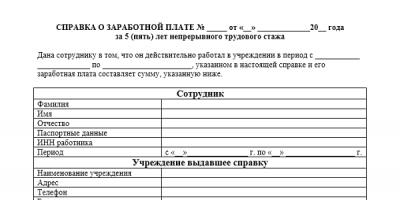State pension (aka state pension) are the payments that the country provides:
- civil servants for length of service;
- cosmonauts, pilots;
- victims of disasters such as the accident at the Chernobyl nuclear power plant;
- disabled people;
- people who have lost their breadwinner (children under 18 and students under 23 who do not have one or both parents);
- disabled citizens who need a means of subsistence.
Let us now consider in more detail both concepts and let's give their definitions.
Funds prescribed for disability, loss of a breadwinner or old age called social pension.
This is a guarantee from the state that not a single person who is unable to earn money will not be without support pension provision.
An old-age pension is granted from 60 years for women and 65 for men(from 55 and 50 for small peoples of the North), its size for 2017 is 5034 rubles 23 kopecks.
Important! An insurance pension is payments every month, which are formed from insurance contributions paid by the employer to the Pension Fund of the Russian Federation for the entire work activity of a person.
They are appointed in case occurrence of an insured event– disability (if a person has work experience), loss of a breadwinner (if he worked), old age (55 years for the weaker sex and 60 for the stronger).
She divided into two parts– a fixed payment, the amount of which is set by the state, and a second payment, the amount of which depends on the funds accumulated from insurance contributions.
What are the differences between them?
The main difference between an insurance pension and state pensions in that the first is paid through deductions of insurance contributions to the Pension Fund. They make up 22% of annual salary employee and are accounted for in an individual account. Those who worked have the right to it, and the higher the salary, the more they will receive in old age.
The second is paid from the federal budget, even if there were no insurance premiums, but has strictly fixed size.
To put it simply, those who have worked and earned enough receive an insurance pension, while everyone receives a state pension, but it’s a pittance.
How to switch from social to labor - detailed step-by-step instructions
Let's find out how a pensioner can switch to labor payment with social.
When people entitled to a state (social) pension (disabled people, as well as victims of radiation and industrial disasters), continue to work, they also have the right to work.
According to the Federal Law of December 28, 2013 N 400-FZ “On Insurance Pensions” one pension is assigned - the one where the amount is larger, but there are some exceptions from this rule.
Important! Only participants in the Great Patriotic War, disabled siege survivors and those who received war injuries are entitled to two pensions.
So, a person on a state pension worked until he was 55-60 years old. To instead disability payments to switch to an insurance pension, he needs:

Many people in Russia do not think about what kind of pension they will be assigned, as well as what size it will be paid. Others, on the contrary, strive to save as much as possible in order to ensure a comfortable old age. It is important to understand all types of pension contributions that are established in Russia in order to have the necessary funds in the event of a period of incapacity for work.
Pension benefits in Russia are paid to those citizens who are disabled or have the right to receive these payments on the basis of established legislation.
The most popular type of pension provision is insurance payment. It is assigned to all able-bodied citizens who will:
- have the required experience;
- make the required number of deductions;
- will be age appropriate.
The essence of the formation of an insurance pension (previously it was called a labor pension) is that the citizen is officially employed throughout his life. His employer makes the necessary contributions to the Pension Fund based on the employee’s salary. And based on these contributions and length of service, the future amount of pension payments is formed. In Russia, 22% is deducted for the formation of a future pension. Moreover, all of them are fully paid by the employer. The employee pays only income tax from his salary, while the employer withholds it and transfers it to the tax authorities.
Social benefits are assigned in cases where a person is disabled, and also if, under certain circumstances, he cannot qualify for a labor pension.
Kinds
There are 3 main types of social and insurance payments. At the same time, they are similar in their names and bases. That is why many citizens confuse them so often. Social benefits may be assigned on the following grounds:
- in connection with the arrival of a certain retirement age;
- due to the loss of a close relative who was the breadwinner of a disabled person;
- due to a disability.
A similar classification is established for insurance payments. It can be paid on the same grounds. But the main difference between insurance payments and social benefits is the presence of a certain length of service.
Insurance pension
To receive it, a person must have work experience established by law. In this case, it will be possible to consider receiving a specific payment.
According to the age
After the latest pension reform, in order to retire and receive a labor pension in the current year 2019, the following conditions must be met:
- reaching 55 or 60 years of age (women and men, respectively);
- accumulation of experience throughout life, taking into account all periods that also count towards work experience, at least 9 years;
- accumulation of 13.8 points, which are calculated based on deductions that were sent from each salary to the Pension Fund.
Currently, these conditions change annually until, by 2025, the number of points required reaches 30 and the length of service equals 15 years.
Also, regarding the retirement age, the President signed a decree that the retirement age for government workers has increased to 63 years for women and 65 years for men. Therefore, it is quite possible that the retirement age will soon increase for all citizens.
In case of loss of a breadwinner
The labor type of this benefit will be assigned if the breadwinner had at least one full day of work experience. In this case, the number of years worked and the amount of accumulated points will not matter. This provision is understood as compensation to the dependents of the deceased person for those pension payments that the breadwinner himself did not receive.
Only disabled citizens who were close relatives of the deceased person can count on receiving such a pension.
By disability
To apply for this type of payment, it is important that the person has at least some experience. A disabled person could receive it before he received a certain disability group, or, having a certain group, he can find a job and work within the limits of his limited working capacity.
Payments are assigned as follows:
- If by 2019 a citizen with a disability has completed the required 9 years of service and has the required amount of contributions, then he will be assigned a pension before he reaches retirement age.
- If he does not fit the new conditions of the program, then he switches to receiving social benefits after reaching retirement age.
Thus, the receipt of a labor pension payment is directly influenced by the length of service. If available, citizens have the right to apply for such a pension. If a person does not meet the established requirements of the new reform, then he is assigned social security.
Social pension
This type of payment is intended for those citizens who, due to certain circumstances, cannot work, as well as those who do not qualify for insurance coverage. Its recipients include:
- WWII veterans, as well as residents of besieged Leningrad who became disabled during these years;
- all groups of disabled people;
- children recognized as orphans, as well as teenagers under 23 years of age, if they are studying full-time and have lost their parents;
- citizens who have reached the established retirement age, but do not meet the requirements for receiving labor pension payments;
- representatives of the ethnic peoples of the Far North after they reach 50 and 55 years of age (women and men, respectively).
These payments are made directly from the federal budget and have a set amount. It is established annually by law and does not depend on length of service.
By old age
If a citizen has reached retirement age, but his length of service or the necessary transfers are not enough to receive a labor payment, he will be assigned a social benefit. Its minimum size is 8,742 rubles. From April 2019, it will be paid in the amount of 9045 rubles. The amount is set based on the cost of living in the regions and in Russia as a whole, since citizens should not receive pensions below the established minimum.
If, after the payment was assigned, the cost of living was increased, the pensioner has the right to contact social authorities to receive an increase in the amount of the missing amount.
In case of loss of a breadwinner
If a deceased person has dependents without his support, then they have the right to receive pension payments for themselves. In this case, a mandatory condition is the disability of these citizens. Every dependent has the right to receive a payment. The amount of such payments from April of this year will be as follows:
- for those who lost 1 parent, 5240.65 rubles;
- for those who were left without 2 relatives, 10,481.34 rubles.
However, the established amounts are not maximum. Since the law establishes that if the pension provision is below the minimum residence requirement for the region, the citizen is entitled to an additional payment up to this amount.
By disability
This type of payment depends directly on the established disability group:
- for children and disabled people of group 1 from childhood 12082.06 rubles;
- for group 2 from childhood and group 1 10,068.52 rubles;
- for group 2 5034.25 rubles;
- for group 3 4279.14 rubles.
If a person has no other income, then he also has the right to receive additional payments up to the established minimum residence requirement.
Of course, insurance pension provision is higher than social security. And this is due, first of all, to the fact that it accumulates through citizen contributions. Social security is paid from the federal budget.
First of all, let’s find out what an insurance pension is. Previously, there was no concept of “insurance pension”, instead there was a “labor pension” - but the essence of financing this type of pension has not changed, it is as follows: payments are accrued to citizens from insurance contributions paid every month to the compulsory pension insurance system. The source of insurance pension payments is the funds generated from monthly contributions. Payments are made by working citizens; The concept of length of service is the sum of the years when a citizen was able to work and paid monthly contributions to the pension fund. When a citizen reaches a certain age, the compulsory pension insurance system returns to him in parts the funds that he contributed to the pension fund throughout his life.
We can say that an insurance or labor pension is a guarantee of a comfortable old age. And the amount of the monthly pension depends on the number of insurance contributions made by the citizen during his life. But if a citizen’s length of service is too short and, as a result of his retirement in old age, the size of his insurance pension is below the subsistence level, he is entitled to a social supplement.
Social pension is a benefit for citizens who for some reason are not entitled to an insurance pension. There are several types of social pensions that are assigned: when a citizen reaches a certain age, in case of his officially confirmed incapacity for work (disability), and also in the event that a dependent citizen has lost his breadwinner.
The size of social pensions is determined by the state; for 2017, the social pension for old age is 5 thousand rubles, for disability - 12 thousand. Non-working pensioners whose insurance pension does not reach the subsistence level are paid an additional supplement - this is also a social pension. Since the cost of living is different in each region of the Russian Federation, the size of the bonus cannot have a fixed value. Now we will take a closer look at each type of pension.
When is an old-age insurance pension awarded?
An insurance pension is assigned to citizens with work experience who have reached a certain age. Women retire at the age of 55, and men at the age of 60. But certain categories of citizens retire at an earlier age, which is due to their professional activities and region of residence. For example, representatives of hazardous professions, such as a miner or metallurgist, will retire 5 or more years earlier; the reduction in years before retirement depends on the position held, as well as the region of residence (a miner working in a cold region of the country may retire and at 45 years old) You can familiarize yourself with the formulas for calculating the insurance pension for certain categories of citizens and regions on the website of the pension fund.
Disability insurance pension
The difference between a disability insurance pension and a social disability pension is that the latter is received by citizens who have never had the opportunity to work at all, that is, they have no work experience, while the disability insurance pension is awarded to those who have lost their ability to work, but who previously worked for they had experience. The amount of the disability insurance pension is calculated in a manner similar to how the old-age insurance pension is calculated, that is, the citizen’s work experience and other indicators are taken into account, which are determined by the pension fund and depend on, in the case of an old-age pension, the region of residence of the citizen, the level of danger of his profession and so on. The size of the disability insurance pension also depends on the disability group received by the citizen (I, II, III).
Survivor's insurance pension
Citizens who are disabled members of the family of the deceased breadwinner, that is, dependent on him, are entitled to an insurance pension for the loss of a breadwinner. Children who have lost both parents also receive this pension. We will not give a formula for calculating the amount of such a pension, but we will indicate what its size depends on:
- the amount of the deceased’s pension capital (that is, his work experience);
- the number of family members left without a breadwinner.
The formula for accurately calculating the survivor's pension is available on the pension fund's website, but it is difficult to independently calculate the pension for a specific case without practical and theoretical experience. Therefore, the option of obtaining advice from a specialist - a pension fund employee - is the best.
What types of social pensions are there?
Social pensions are received by people who specifically need support from the state. If an insurance pension is the result of a citizen’s work throughout his life, then a social pension is a kind of support thanks to which a disabled citizen can exist (remain a full-fledged citizen of his country).
Just like an insurance pension, a social pension is assigned upon the occurrence of:
- a citizen of a certain age,
- disability groups 1-3,
- case of loss of a breadwinner.
It is necessary to remember that citizens of the Russian Federation who for certain reasons (disability, child care, etc.) do not receive an insurance pension are entitled to social pensions, and citizens whose insurance pension is below the subsistence level receive a social supplement (this is also a social pension ).
To whom and when is social pension assigned?
People who, due to health conditions, cannot work, and therefore accumulate work experience, are entitled to a disability benefit. This category of citizens includes people with grades I, II and III. disabilities, as well as children with disabilities.
If the breadwinner dies in the family, then the people who are dependent on him are entitled to a survivor's pension. It is paid to children under 18 years of age, and to citizens who have lost their breadwinner and are studying full-time at an educational institution - it is paid until the age of 23, that is, until the end of their studies at a university. For example, if at the age of 18 a child does not enter college or institute, then he stops receiving a pension. Also, if a student graduates at 22 years old, they stop paying him a social pension. To continue receiving a social pension, you must provide a certificate from your place of study, which will indicate the amount of the scholarship for the last six months.
Elderly people are assigned a social old-age pension if they do not have sufficient length of service to receive an insurance pension. That is, in cases where citizens have not accumulated 15 years of work experience during their lifetime. Social pension is provided to women who have reached the age of 60 and who do not have the length of service required to receive a labor pension; for men this age has been increased by 5 years. Representatives of northern peoples also receive social pensions, age: men - 55 years, women - 50 years. If a citizen has already begun to receive a social pension due to lack of work experience for an insurance pension, and then accumulates the minimum length of service, then he stops receiving a social pension and begins to receive an insurance pension.
If you are unsure whether you are entitled to a Social Security pension, it is recommended that you contact your local pension office to get an answer. If the answer is positive, that is, if a pension is due, you will receive a list of documents necessary for obtaining a pension. The process of applying for a pension can be difficult for people with health problems, but it can be done by a relative or guardian.
In the context of changing legislation, it is not immediately possible to understand what an insurance and labor pension is, and what is the difference between these concepts. A person who is responsible for his future should plan today what payments he can count on after finishing his working career.
Since 2002, pension reform has been taking place in Russia. Until January 1, 2015, the Law “On Labor Pensions in the Russian Federation” No. 144-FZ of December 17, 2001 was in force. According to its provisions, an employee applied for cash payments in old age when he reached the required age and had at least 5 years of experience.
After January 1, 2015, the concept of “labor pension” is absent in the legislation. Instead of one law, there are two: “On insurance pensions” and “On funded pensions”. That is, the previous labor pension was divided into insurance and funded, which a person can claim at the same time. Let's take a closer look.
How is the insurance pension calculated?
The employer pays a monthly contribution of 22% of the employee's salary to ensure his future pension. This money can be used to create:
- exclusively, the insurance part of the pension;
- insurance (16%) and funded (6%) pensions simultaneously.
An insurance pension is assigned for several reasons, one of which is that citizens reach a working age. As a general rule, it is 60 years for men and 55 years for women. Old-age insurance benefits are what most Russian pensioners receive today. Its size now depends on:
- the amount of insurance coverage of the employee;
- the number of points accrued (in other words, individual pension coefficients - IPC);
- application period.
To count on a pension in 2019, an employee needs a minimum insurance period of 8 years. In the future, this value will increase and will be 15 years from 2024. Only the period during which contributions to the Pension Fund of the Russian Federation were paid for the employee are included in the insurance period. Additionally, the period when the person was engaged in socially significant activities is taken into account: he was in military service, caring for a child or an elderly person over 80 years old, etc. Moreover, such a period must precede or follow official employment included in the insurance period.
For each year of insurance service, the employee is awarded IPC points. Their number depends on the size of contributions transferred to the Pension Fund. In order to receive a pension in 2019, the number of IPCs must be 11.4. Every year the requirements will increase, and from 2025 the minimum required number of points will be 30.
The number of points is also limited by an upper limit. Thus, from 2021, no more than 10 points can be awarded in one year to those employees whose pension is formed entirely from the insurance portion. If a person makes pension savings, the maximum amount of points accrued per year will be even less, namely 6.25.
The state constantly indexes the cost of one IPC. From April 1, 2019, one point is equal to 78.58 rubles. To calculate the size of the future payment, the number of accumulated IPCs must be multiplied by the cost of one point in the year when the citizen is awarded a pension.
What is a fixed payment and indexation coefficient?
 In addition to the above indicators, the old-age insurance pension includes a fixed payment, which the state constantly indexes. As of February 1, 2019, it is 4,805.11 rubles.
In addition to the above indicators, the old-age insurance pension includes a fixed payment, which the state constantly indexes. As of February 1, 2019, it is 4,805.11 rubles.
If a person applies for old-age benefits not upon reaching the required age, but later, an increasing coefficient is applied. For example, 3 years after age 60 for men and 55 for women, their pension points will be multiplied by a factor of 1.24, and the fixed benefit will be multiplied by a factor of 1.19. For comparison, if the application occurs 10 or more years after the permitted period, the increasing coefficient for the IPC and the fixed payment will be 2.32 and 2.11, respectively.
Important! Detailed information on the size of increasing coefficients and fixed payments, the cost of the IPC, as well as a calculation calculator are presented on the website of the Pension Fund of the Russian Federation.
A little about pension savings
In addition to forming the insurance part of the pension, working people can make pension savings. In 2019, this right is available to those who submitted the required application to the Pension Fund before December 31, 2015, as well as those starting their labor activity for the first time.
These savings are formed from deductions from the employee’s salary (in the amount of 6%). The total amount at the time of the employee's retirement will consist of collected funds and investment income. The monthly benefit amount is calculated on the basis that payments will be made over a period of 20 years.
In addition to employer contributions, sources of pension savings can be maternity capital, as well as funds from the state co-financing program.
What is social pension
Those people who for some reason cannot qualify for an insurance pension are not left without government support. They are assigned a social pension. Let's look at how it differs from insurance. The reasons for the appointment are the same. The main difference is that you do not need work experience to obtain it. On the contrary, if a citizen works and insurance contributions to the Pension Fund are calculated in his favor, he cannot receive payments during such employment.
Social old-age pension is assigned:
- citizens of the Russian Federation if they are over 65 (for men) or 60 (for women) years;
- citizens who are representatives of small-numbered peoples of the North upon reaching 55 (for men) and 50 (for women) years.
It is also assigned to non-citizens of the Russian Federation if they have lived in Russia for at least 15 years. In 2019, the amount of social benefits for old age is 5,034.25 rubles per month.
Additional Social Security
For certain professional categories of workers, the state has provided the right to receive additional funds. This right can be exercised by flight crew members and coal industry workers. The calculation procedure, rules for assigning and the amount of such payments are regulated by separate federal laws. The amount of additional social security does not depend on the type and size of the pension to which it is accrued.
What is social supplement
Each subject of the Russian Federation establishes the value of the PMS - the subsistence minimum for a pensioner. If the amount of PMP exceeds the monthly financial support of a non-working pensioner, such a citizen is entitled to a social supplement from the federal or regional budgets. The cost of living is established separately for each region and for the Russian Federation as a whole. When calculating the supplement, the amount of monthly financial support includes, in addition to the pension, other material payments and social support measures.
Let's look at an example. For 2019, the value of PMP in Russia is 8,540.00 rubles. Suppose a person lives in the Belgorod region and has a total monthly income of 7,800.00 rubles. In this region, the PMP is equal to 8,016.00 rubles, that is, lower than the same figure for the Russian Federation. This means that our pensioner will receive a social supplement in the amount of 216 rubles, and at the expense of the federal budget.
Let’s assume that another non-working pensioner lives in the Murmansk region, where the amount of PMP is set at 12,090.00 rubles, that is, higher than the Russian figure. Having the amount of material support of 9,000.00 rubles. per month, a resident of this region will receive a social supplement of 3,290.00 rubles. monthly. Moreover, it will be produced from the regional budget.
Thus, depending on age, the chosen program in the compulsory pension insurance system, accumulated insurance experience, level of labor income and type of professional occupation, a citizen can count on different types of pensions. For their appointment, he can apply to the Pension Fund of Russia or the MFC.
Attention! Due to recent changes in legislation, the legal information in this article may be out of date!
Our lawyer can advise you free of charge - write your question in the form below:
Russian legislation provides for several types of pensions. Commonly used ones that do not have departmental or industry specifics include insurance and social old-age pensions. What are the specifics of each of them? How are they fundamentally different from each other?
Insurance pension: terms of assignment
Before considering the differences between insurance and social pensions, let’s familiarize ourselves with the conditions for assigning each of them. Let's start with insurance. It is assigned provided that the pension applicant:
- has reached the statutory retirement age;
- has a minimum length of service and a minimum individual pension coefficient (IPC) for the assignment of an insurance pension.
The pension can be:
- registered in cases provided by law ahead of schedule - before reaching retirement age;
- paid along with wages (adjusted for some indexation features - which may be different for working and non-working pensioners).
Note that the insurance pension of a non-working pensioner is in any case subject to indexation - in an amount that is determined taking into account inflation.
Probably the main difference between an insurance pension and a social pension in essence is the size and principles of its calculation. In the case of the type of pension under consideration, it is calculated using a rather complex formula, which takes into account, in particular:
- experience;
- salary;
- region of labor activity;
- pension account structure (with or without a savings component, with or without additional capitalization within the framework of co-financing programs).
The insurance pension can be transferred to the management of the Pension Fund or a non-state pension fund (in terms of the funded component of the pension). This procedure is regulated by separate provisions of law.
Now - about the specifics of the social pension.
Social pension: conditions of assignment
The most important difference between insurance and social pensions is that when assigning the second, length of service and IPC do not matter. They may not exist at all - if the person did not work at all (or received a salary “in an envelope”). The main criterion for receiving a social pension is reaching the legal age.
It is significantly higher than that determined for the insurance pension. But apart from this nuance, the social pension and the insurance pension have a large number of other differences in essence - in particular, from the point of view of:
- conditions of employment when receiving a pension;
- determining the amount of pension payments;
- conditions for receiving a pension early - before the statutory retirement age;
- conditions for transferring the pension to the management of a non-state pension fund;
- indexing conditions.
It is worth mentioning separately that within the framework of pension insurance (social insurance) programs, there are, along with old-age pensions, a number of other types of pensions (with special conditions for receipt):
- for disability (which can be insurance or social);
- for loss of a breadwinner (insurance or social).
There are various departmental and corporate pensions - but their purpose is outside the jurisdiction of federal laws.
Let's look at the difference between insurance and social pensions (assuming that we are talking specifically about old-age pensions), using a small table.
Similarities and differences between pensions: table
| Criterion | Insurance pension | Social pension |
| Retirement age | 60 years (men) 55 years old (women) * |
65 years old (men) 60 years (women) |
| Minimum experience | From 9 (upon retirement in 2018) to 15 (2024) years | Doesn't matter |
| Minimum IPC | From 13.8 (2018) to 30 (estimated - 2025) | Doesn't matter |
| Early registration | 2 years before retirement age when laid off from work (and when occupying positions that give the right to early retirement) | Not provided |
| Indexing | For a non-working pensioner - taking into account inflation | Similar, but in an amount that is usually smaller compared to an insurance pension |
| Is it paid upon employment? | Yes (in some cases with reduced indexing or without indexing) | No |
| Can it be transferred to the management of a non-state pension fund? | Yes (funded part of pension) | No |
| Size | According to the rules established by Law 400-FZ The expected average pension in 2018 is RUB 14,400. |
At least the subsistence level in the region (for pensioners) If the PM in the region is federal, then in 2018 it is equal to 8078 rubles. |
* When a person lives in the Far North (applicable to both types of pensions), when performing certain types of heavy work and when working in harmful and dangerous working conditions (in the case of an insurance pension), the retirement age can be significantly reduced.
Despite the undeniability of the differences between a social pension and an insurance pension discussed above, it is fair to say that the first is intended for a situational (temporary or permanent) replacement of the second. That is, a social pension is issued, first of all, for the reason that a person does not have the right - due to lack of length of service or a lack of IPC - to claim a regular insurance pension, while the state needs to provide him with at least some financial support in old age .








